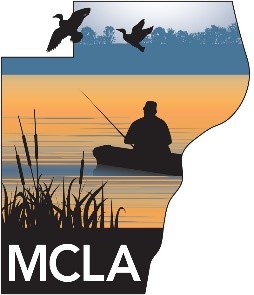“Author and guest speaker Ted Rulseh opened his recent presentation with this quote by Jane Goodall: “Only if we understand, can we care. Only if we care, we will help. Only if we help, we shall be saved.”
At the Manitowoc County Lakes Meeting on Thursday December 6, at the Manitowoc County Office building, Rulseh, a former resident of Manitowoc County, brought to us an overview of his lifelong experience with and study of the lakes in our area and around Wisconsin. He is an author, editor and publisher of several books on the Great Lakes region, the author of ‘On the Pond: Lake Michigan Reflections,’ And, most recently, Author of “A Lakeside Companion,” published by The University of Wisconsin Press.
Drawing from that book, he showed in clear, simple terms, the basic relationships we have with the lakes around us.
One way to classify lakes is by how they get their water.
You may recognize your lake as being one of a type that Rulseh categorized:
A drainage lake is fed by a stream that is its major source of water. Drought will not affect the water level very much.
A seepage lake depends on groundwater and is more affected by drought.
A perched lake, with no stream inlet and no connection to groundwater, depends on rainfall and is greatly affected by drought.
Another way to classify lakes is by the level of nutrients in the water.
An oligotrophic lake is low in nutrients. It is a clear and deep lake with little algae and few weeds. The lack of nutrients may mean that fish populations are limited.
A mesotrophic lake has more vegetation and a diverse fish population.
A eutrophic lake is weedy, and rich in algae. Wetlands may surround it, and bird life and fish tend to be abundant. Many lakes in Manitowoc County are classified as eutrophic.
Rulseh also showed the seasonal change in lakes related to water temperature. In summer, thermal stratification takes place: a layer of warmer water on top and colder, denser water below. In fall, the layers disappear and the entire lake is infused with oxygen, commonly called the turnover.
Colder water can hold more oxygen than warm water. As a result, in winter, by the time the ice forms, the water is rich in oxygen to sustain fish and other life until spring. When the ice melts, the lake water mixes again and takes in a fresh supply of oxygen.
Rulseh also described how lakes can be divided into zones.
First is the littoral zone that holds plant life and most of the fish life close to shore. The limnetic zone is the surface layer of open water where algae float freely. The profundal zone is the deep water, generally cold and low in oxygen. The benthic zone consists of the lake bottom sediment, generally rich in life.
We see that plant life in lakes includes floating-leaf plants like water lilies, submersed plants, rooted in the bottom and growing below the surface; and emergent plants like rushes and cattails that stand above the surface. The sun provides the energy for all life in lakes, from microscopic algae, to tiny animals, on up the food chain to fish and birds.
Rulseh’s recently released book presents the science of lakes in an enjoyable way, with real world examples. He explains how little things that shore residents do on their property can have a large, and if done correctly, positive impacts on the lake’s ecology.
Rulseh writes the newspaper column “The Lake Where You Live,” and is active in lake-advocacy organizations, including the Wisconsin Citizen Lake Monitoring Network. He lives in the lake-rich region of northeastern Wisconsin.”
You may also like
-
Green Bay Walleye Reward Tag Study Continues In 2025
-
Learn About Green Bay Walleye And Musky Management On March 3
-
Fish & Game’s annual meeting, Candlelight Night: Your latest Manitowoc outdoors report
-
Friends of the Branch River Newsletter End of the Year 2024
-
MISHICOT SPORTSMEN’S CLUB CHANGE OF MEETING DATE
